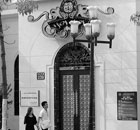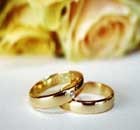Expats
Decorating for luck
By Alexandra Leyton Espinoza (China Daily)
Updated: 2010-02-10 10:41
 |
Large Medium Small |
|
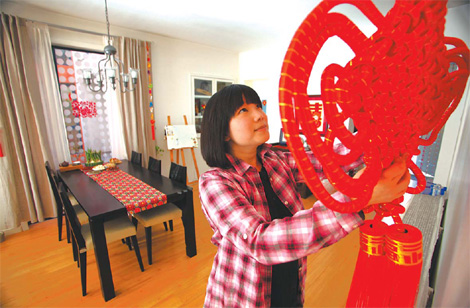 Homeowner Shi Jiamei puts up a Chinese knot as a sign of good luck to celebrate the Year of the Tiger. Wang Jing |
Chinese knots, magical rabbits, scarlet lanterns all back in fashion for homeowners ahead of holiday season
Spring Festival should be a time when tradition is in and modern is out, according to the fresh thinking of a Beijing homeowner.
Shi Jiamei, a 31-year-old housewife, has furnished her IKEA-style home in Vanke Qingqing community in Beijing's eastern suburbs with traditional Chinese decor.
Entering the lobby you are welcomed by three red paper-made spring couplets on each side of the front door.
They are paper curls and squares engraved with blessings and auspicious gold-colored Chinese characters.
The red color represents power and happiness and is common during the New Year, the gold characters represent wealth and a good future. The two colors help ward off evil as well.
If you translate the Chinese characters, they reflect how grateful we should feel for the past year.
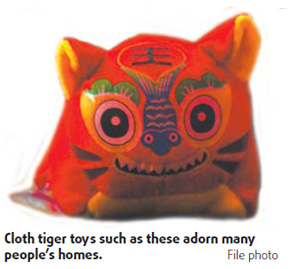
Over the top of Shi's door are more characters, offering happiness and prosperity for the coming year.
The lobby is furnished with a couch and two armchairs next to a small table bearing a small tea set.
The couch is covered in red blankets and, on the table, you find another hand-made red picture written in gold and originally produced by a local calligrapher.
"Many people, even myself, buy decorations from department stores. I wanted to have something special, so I found this calligrapher and made him write something down. I will put it on my front door," she said.
On her front door, she has hung two pictures of different Chinese warriors.
They are thought to keep evil outside and protect the family of two.
Superstition is common during the Spring Festival, according to Shi. "Especially older people want the things they decorate their homes with to bring them peace, protection and happiness, most of all good luck," she said.
In their small hall hangs a traditional lucky knot, which represents health and happiness. There is also a Buddhist sign because her husband is a Buddhist. In the living room, you can see a small closet where he lights candles and prays.
There is also a big embroidered picture of two Chinese children, a girl and a boy in the home - a wedding gift from Shi's sister symbolizing the couple.
On one of the windows hangs two stuffed animals made of silk that represent animals from the cycle of the Chinese Zodiac. The coming year will be the Year of the Tiger, the third animal in the cycle.
The tiger represents energy, passion and integrity.
On the windows hang typical paper decoupage cut-paper in the form of two birds surrounded by flowers.
"I choose to hang this because it represents my family, my husband and I. The ones cut out to look like goldfish are more typical," she said.
On the living room table that she bought in Illinois furniture store, she has served some Chinese snacks, treats that are typical during Chinese New Year.
Peanuts for long life, candied melon for growth and good health, red melon seed that symbolizes joy and happiness and of many others.
Two small tigers hand-made of gypsum are also situated on the table.
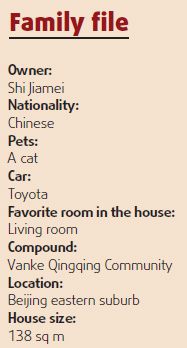
There is also a narcissus flower, which should start to grow before Chinese New Year.
On her living room window, red paper lanterns hang in a row, Chinese firecrackers and a big Chinese style tassel hang in one corner in the living room.
Shi buys most of her decorations at Tianyi market, in western Beijing's Fuchengmen. Not just cute handmade items but also bulk purchases for family and friends.
"I try to combine small hand-made pieces that are unique with decorations that you find in department stores. This I put together to decorate my house," she said.
Shi usually decorates her home six days before the festival according to the Chinese calendar, but is aware of a fading tradition.
"I am afraid that many traditional Chinese decorations have disappeared. People today prefer a more modern style," she said.

